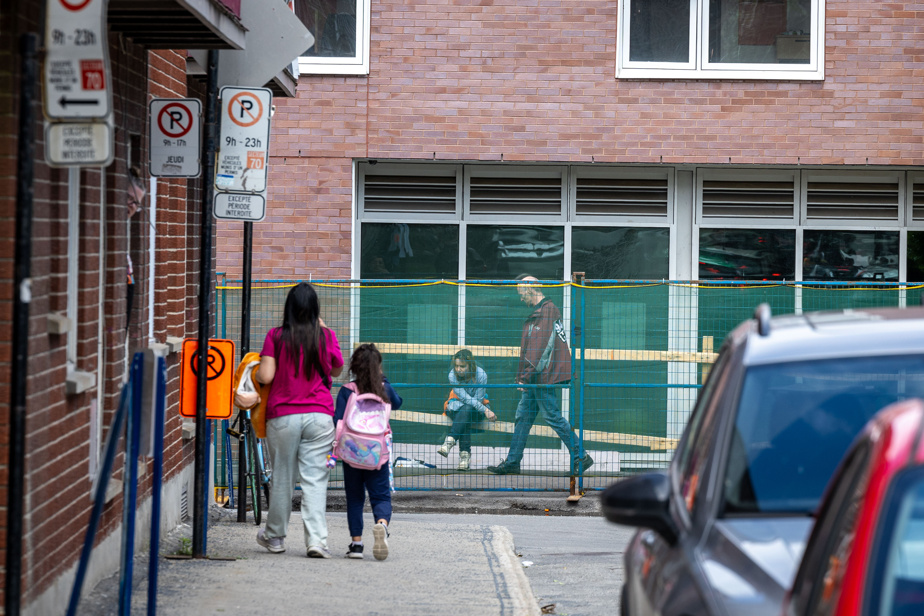Impact of Homelessness on Children in Central Neighborhoods | “My daughter doesn’t even want to come to school anymore”
A recent surge in social crises has made the cohabitation between childhood and homelessness increasingly complex in central neighborhoods of Montreal. Children are witnessing disturbing events on a daily basis, with some even being escorted by the police to leave daycare centers. This exposure to problematic scenes can have a significant psychological impact on the children, according to a psychologist.
Jessica Normandeau, a mother waiting for her 5-year-old son outside Victor-Rousselot school in the South-West, shared her concerns about her son’s fear. Incidents involving homeless individuals throwing objects at her son have left him traumatized, leading to anxiety and fear during school hours.
In response to the challenges posed by homelessness in these neighborhoods, the Maison Benoît-Labre recently opened a day center and supervised consumption site near Victor-Rousselot school. However, the project faced opposition from the local community due to concerns about safety and security.
Challenges of Coexistence in Montreal Daycares
The presence of homeless individuals in close proximity to daycare centers has forced some institutions, like CPE Le Petit Palais on Viger Street West, to require police escorts for children during outdoor activities. The director of the daycare highlighted incidents of intoxication and aggression among homeless individuals in the neighborhood, underscoring the need for enhanced protection for the children.
At CPE La Petite Colonie on Stanley Street, a distressing incident involving the discovery of a body in the courtyard further emphasized the challenges faced by young children in urban environments. Parents and daycare administrators are calling for increased measures to ensure the safety and well-being of the children in the face of such adversity.
Protecting Children in the Face of Urban Challenges
Psychologist Rose-Marie Charest emphasized the importance of shielding children from excessive exposure to violence, sexuality, and drug-related issues. While acknowledging the inevitability of children encountering diverse social situations, she stressed the need for creating safe and peaceful environments where children can thrive without fear or insecurity.
Parents like Stéphanie Larin are grappling with the emotional toll of navigating these challenging circumstances, as their children express fear and reluctance to attend school due to the disturbances caused by homelessness in the vicinity. The Center for School Services in Montreal has reported a significant increase in disruptive events since the opening of the day center at Maison Benoît-Labre, prompting concerns about the overall well-being of the students.
In conclusion, the ongoing cohabitation challenges between children and homeless individuals in central neighborhoods of Montreal underscore the urgent need for collaborative efforts to ensure the safety, security, and emotional well-being of the younger members of the community. It is imperative to address the root causes of homelessness and implement targeted interventions to support both the homeless population and the vulnerable children affected by these complex social issues.




